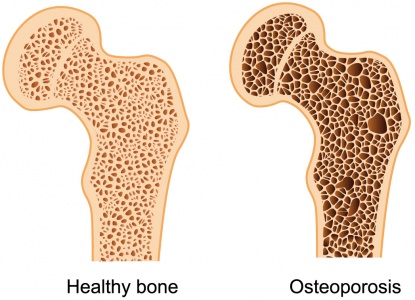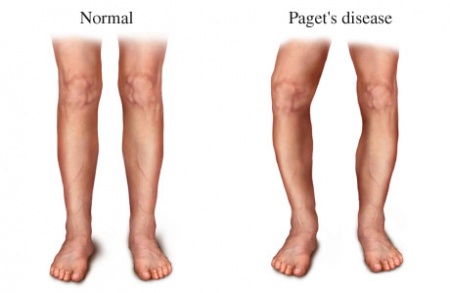Fracture
Top Contributors - Esraa Mohamed Abdullzaher, Naomi O'Reilly, Kalyani Yajnanarayan, Lucinda hampton, Khloud Shreif, Kim Jackson, Claire Knott, Abbey Wright and Aminat Abolade
Definition[edit | edit source]
A fracture is a discontinuity in a bone (or cartilage) resulting from mechanical forces which exceed the bone's ability to withstand them.[1]
Most commonly fractures occur in the setting of a normal bone with acute overwhelming force, usually in the setting of trauma. Fractures can also occur, however, in a variety of other settings.
- The entire skeleton may be weak due to metabolic (e.g. osteoporosis) or less frequently genetic abnormalities (e.g. osteogenesis imperfecta) and thus prone to fractures from forces that would be insufficient to cause fractures in normal bones. These are known as insufficiency fractures.
2.The protracted chronic application of abnormal stresses (e.g. running) can result in the accumulation of microfractures faster than the body can heal, eventually resulting in macroscopic failure. These are termed fatigue fractures. Nb.Together, insufficiency and fatigue fractures are often grouped together as stress fractures.
3.The bone may have a lesion that focally weakens a bone (e.g. metastasis, or bone cyst). These are known as pathological fractures.
. 
 Location[edit | edit source]
Location[edit | edit source]
- which bone is fractured
- which part of the bone is affected
- general: epiphysis, physis, metaphysis, diaphysis; specific features: e.g. tubercle, epicondyle etc...
Type[edit | edit source]
Fractures usually fall within a set number of patterns.
- complete fracture: extends all the way across the bone (most common)
- transverse fracture: perpendicular to the axis of the bone
- oblique fracture: orientated obliquely across the bone
- spiral fracture: helical fracture path usually in the diaphysis of long bones
- comminuted fracture: more than two parts
- incomplete fracture: does not cross the bone completely (usually encountered in children)
- bowing fracture
- buckle fracture: the cortex is buckled, often in the distal radius
- greenstick fracture: the cortex is broken, but only on one side[1]
Complications[edit | edit source]
Many of the aforementioned fracture types can also go on to have additional complicating features (and many associated soft tissue injuries)
- Compound fracture: extending through the skin
- Joint involvement: intracapsular; articular; dislocation
Clinical Features of Fracture[edit | edit source]
Clinical features vary depending on the cause and nature of the injury, and range from unconsciousness to the patient being able to use the limb, although complaining of pain .
And these features are :
• Pain
• Deformity
• Edema
• Loss of function
• Muscle spasm
• Muscle atrophy
• Abnormal movement
• limitation of joint motion
• shock
When is fracture healed[edit | edit source]
The answer to this question depends upon many factors, including :
• The type of bone fractured
• The type of fracture sustained
• The age of the person
• The treatment undergone
• The nutritional status of the person.
A fracture is considered to be clinically healed based upon the combination of physical findings and symptoms over time.
And the following suggest complete healing :
• absence of pain on weight-bearing, lifting or movement
• no tenderness on palpation at the fracture site
• blurring or disappearance of the fracture line on X-ray
• full or near full functional ability .
Fracture management[edit | edit source]
Once a fracture has been diagnosed, the most suitable treatment must be decided upon. This should be the minimum possible intervention that will safely and effectively provide the right environment for healing of the fracture.
And it can be managed by :
• Reduction
• Immobilization ( By Plaster of Paris , intramedullary nails , Functional bracing , Internal and External Fixation )
• Traction .
Role of physiotherapy[edit | edit source]
The physiotherapist’s role is to identify the cause of the problem and to select the appropriate procedure to alleviate or eliminate the cause of the loss of movement .
Doing an assessment for the patient is necessary also doing The problem-oriented medical record (POMR) system ( is based on a data collection system that incorporates the acronym SOAP:
• Subjective – any information given to you by the patient: allergies, past medical history, past surgical history, family history, social history (living arrangements, social conditions, employment, medication), review of systems .
• Objective – all information obtained through observation or testing, e.g. range of joint movement, muscle strength .
• Analysis – a listing of problems based on what you know from a review of subjective and objective data.
• Plan – this refers to the plan of treatment ) .
Also By Using specific exercises, the aim is to reduce any swelling, regain full muscle power and joint movement and to bring back full function.
The treatment will depend very much on the problems identified during your initial assessment, but may include a mixture of the following:
• Soft tissue massage, particularly to manage Edema and swelling
• Scar management if the patient had surgery to fix the fracture
• Ice therapy
• Stretching exercises to regain joint range of movement
• Joint manual therapy and mobilizations to assist in regaining joint mobility
• Structured and progressive strengthening regime
• Balance and control work and gait (walking) re-education where appropriate
• Taping to support the injured area/help with swelling management
• Return to sport preparatory work and advice where required
References[edit | edit source]
- ↑ 1.0 1.1 Radiopedia Fracture Available from:https://radiopaedia.org/articles/fracture-1 (last accessed 2.4.2020)







